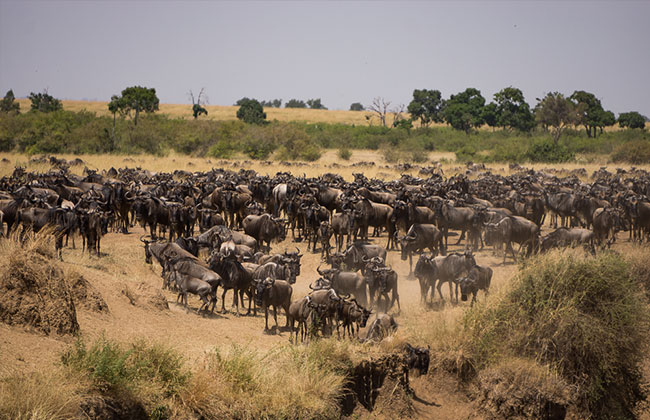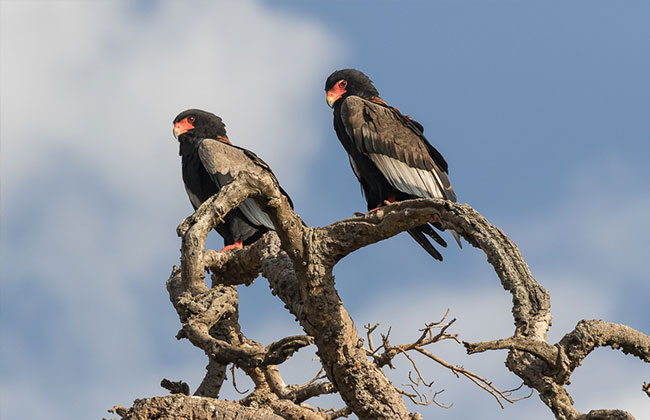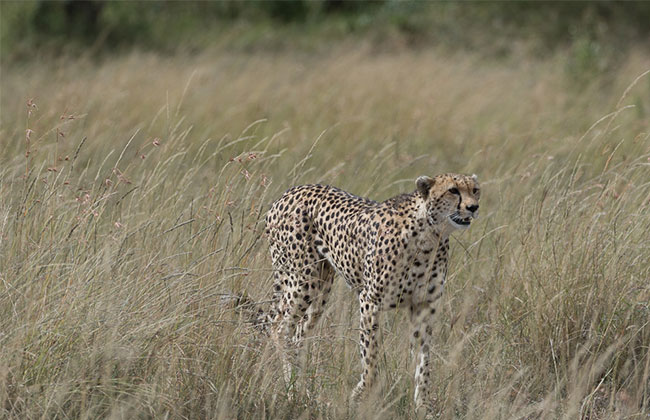Serengeti National Park
REGIONS OF THE SERENGETI national park
Southern Serengeti
Vast short-grass plains stretching into the north of Ngorongoro Conservation Area, the south-west Loliondo and Maswa Game Reserve. Occasionally there are small kopjes which, like the forests around Lake Ndutu, harbour good populations of resident game. From late-November to April, this area is alive with grazing wildebeest.
The Seronera Valley
In the heart of the national park, just to the north of the short-grass plains, Seronera has all the best features of the Serengeti. A beautiful scenic area, with open plains, occasional kopjes and lines of hills. The resident game here is phenomenal, with high densities of leopards, cheetah and lion. These live off the resident herbivores, as well as the migrating game. The migration passes through here in April/May, but Seronera is within reach of both the Southern Plains and the Western Corridor – so from about November to June, it can be used as a base to see the migration.
Western Serengeti
Stretching almost to Lake Victoria, the Serengeti narrows into what’s known as the Western Corridor. Two rivers, the Grumeti and the Mbalageti, which run almost parallel, each support a band of most, evergreen riparian forest. This area sustains a very good permanent game population, including plenty of zebra and wildebeest and all the predators. The birdlife is particularly varied. The migration passes through between about May and July – pausing to gather momentum before crossing the crocodile-rich waters of the Grumeti River, into the Grumeti Reserve.
Northern Serengeti
Stretching from Seronera for approximately 100km north, to the Kenyan border, the northern Serengeti is gently rolling country, broken by small rivers and occasional hills and kopjes. There are good permanent populations of wildlife in several areas here.
When the migration passes this area, between about August and October, visitors can enjoy spectacular crossings of the Mara River. A particularly stunning area is the wild Lamai Wedge – the area of land between the Mara River and the Kenya Border – which includes the picturesque Wogakuria Kopjie, and a beautiful series of game-rich valleys and plains. This is the only area of the national park where off-road driving is acceptable.
Grumeti Reserve
Singita Grumeti Reserves covers almost 1,500km² of private reserves running along the north side of the Western Corridor. Visitors staying here will have exclusive and unrivalled views of the migration as it journeys north. The exclusive camps here recycle all of their profits into local conservation and community development initiatives.
Loliondo Reserve
West of the Serengeti National Park, between the Ngorongoro Conservation Area and the Kenyan border, lies Loliondo game controlled Area. This area belongs to the Maasai tribes that live there. This reserve is very much a part of the Serengeti’s ecosystem; it has abundant resident game and the migration passes through here as well.
Camps here offer night game drives and walks with the Maasai guides and visits to local Maasai villages. Around October and November, there’s a good chance to see part of the migration here, as it returns south.
highlights
The Great Wildebeest Migration
Serengeti National Park known for one of the greatest wildlife shows on earth – the Great Wildebeest Migration. The migration is a natural wonder of the world. Over a million wildebeests, accompanied by zebra, gazelles and eland, circulates the Serengeti National Park in Tanzania and the Masai Mara Game Reserve in Kenya. The route of the migration is dictated by the rainfall and the resulting growth of grasses on the plains. There is neither a start nor finish to their journey; merely a relentless sequence of life and death. The only beginning is the moment of birth and the only ending is death – which can come only too easily during their journey. The precise timing of the migration is dependent upon the rainfall patterns each year. Nor is it confined to the un-fenced National Park, and instead flows into the surrounding Game Reserves.

The Migration Cycle:
January - March
The Ngorongoro Conservation Area and Maswa Game Reserve, south-east of the Serengeti offer refuge during the short dry season thanks to its numerous rivers and spring grasses, at this time the Wildebeest rest and give birth. Up to 400,000 calves are born in a synchronized birthing within just two to three weeks of one another! Unsurprisingly, this presents a veritable feast for any accompanying predators – and the first challenge in the wildebeest’s life – with hundreds of hyenas and lions scattered across this area taking their chances with a potential glut of vulnerable newborns.
April
The Wildebeest begin their journey, moving in en-mass, northwards into the National Park and passing through the popular central area of the park at Seronera. This is also the time of the annual rut, and start of the gestation period (eight and a half months) of the next year’s calves.
May - June
The Rainy season arrives. With the fertile plains covered with grass drawing the migration westward towards it. The Western Corridor including the Grumeti Game Reserve and Ikorongo Game Reserve host the majority of the migration, offering the Game a chance to build up their strength for the journey ahead.
July
The migration heads north, through the park and towards the Kenyan border. It is from this point that the migration takes on one of its most spectacular and deadly advances: – the river crossings; in the Serengeti the Mbalangeti and Grumeti rivers, and in Kenya, the most famous crossing, the Mara river. Many adults and calves are lost to crocodile and lion attacks, drowned or crushed by the herd and calves regularly become separated from their mothers on the wrong side of the river, resulting in little hope for their survival.
August - October
The wildebeest spend several months in Masai Mara feeding, taking advantage of the green pastures and isolated rainstorms.
Late October
The first of the short rains fall start on the grass plains to the south of the Serengeti, filling seasonal waterholes and bringing fresh growths of grass. The wildebeest instinctively start heading south again, trekking down through the eastern woodlands and back into the Ngorongoro Conservation Area. The Wildebeest scatter and spread out again once they reach the open plains having completed a journey of over 500 miles. With 90 per cent of the cows heavy with the new season’s young the journey is ready to start once again with the birth of the next generation of calves.

Birdlife
The larger Serengeti-Mara ecosystem is among Africa’s Endemic Bird Areas. The area has over 500 species including 5 endemic species of birds. The Serengeti specials have been seen and even identified within their confined range. In the Seronera area in the middle of the park, the grey-breasted spurfowl is among the common roadside birds. In forest areas, you will catch sight of flocks of Fischer’s lovebird and unique rufous-tailed weavers. The other 2 Serengeti-Mara EBA endemics are the grey-crested helmet-shrike together with the Usambiro barbet. From November to April, many various Migratory birds swarm this area.
Wildlife
Throughout the Serengeti there is plenty of wildlife. In addition to the annual wildebeest migration Serengeti National Park is home to the Big 5, and many other species of animals. An abundance of the plains game which includes buffalos, giraffes, antelopes, zebras and more. Big cats roam the plains and have their territories from the south all the way to the Masai Mara. The Serengeti is one of the best game viewing parks in the world.

Best time to visit
There are distinct best times for visiting Serengeti National Park. Each month unfolds a new chapter in the story of the Great Wildebeest Migration and each area holds the key to entrancing new sights.
During November and December, the migrating wildebeest and zebra herds return to the southern Ndutu plains to crop fresh grass in the company of elands, Thompson’s and Grant’s gazelles.
February is the mass calving season, an event well worth experiencing. During the course of three weeks, an estimated 400,000 wildebeest calves are born. The birthing season brings along a mass of predators to feed their hunger.
April and May with sprinkles starting around the middle of March and dusting by early June, the herds turn northward through the western Serengeti corridor and along the central outskirts.
The Grumeti River crossing is a perilous trap in June and July, with the giant Nile crocodile congregating and waiting for the wildebeest.

